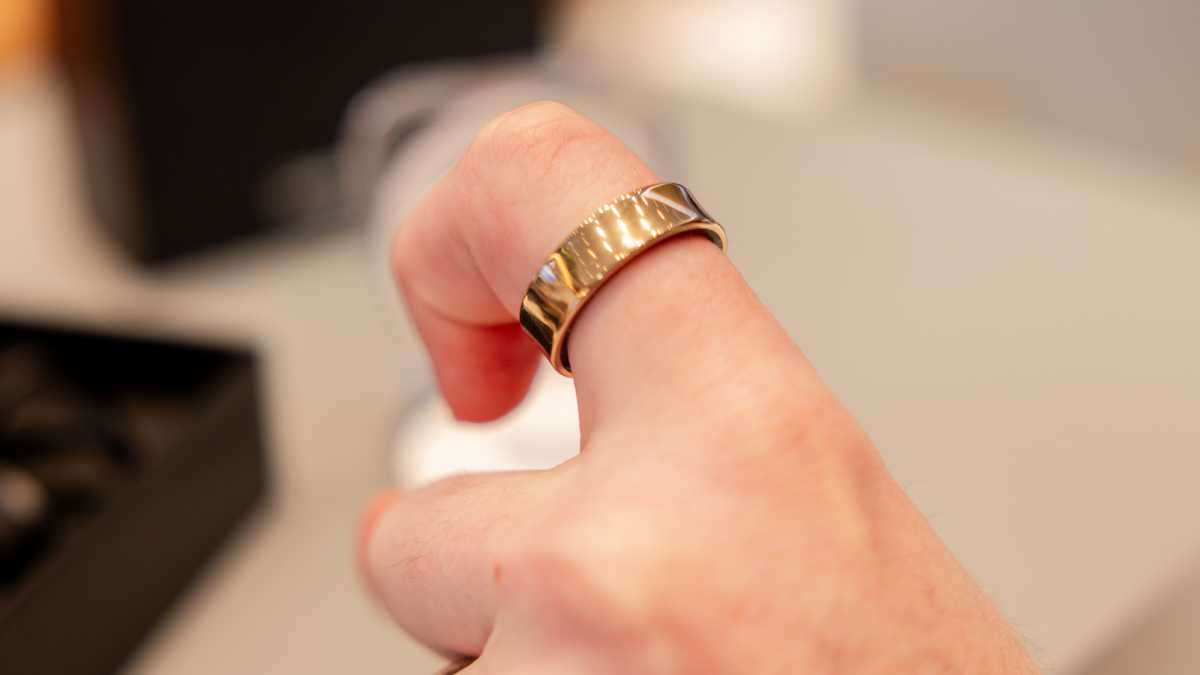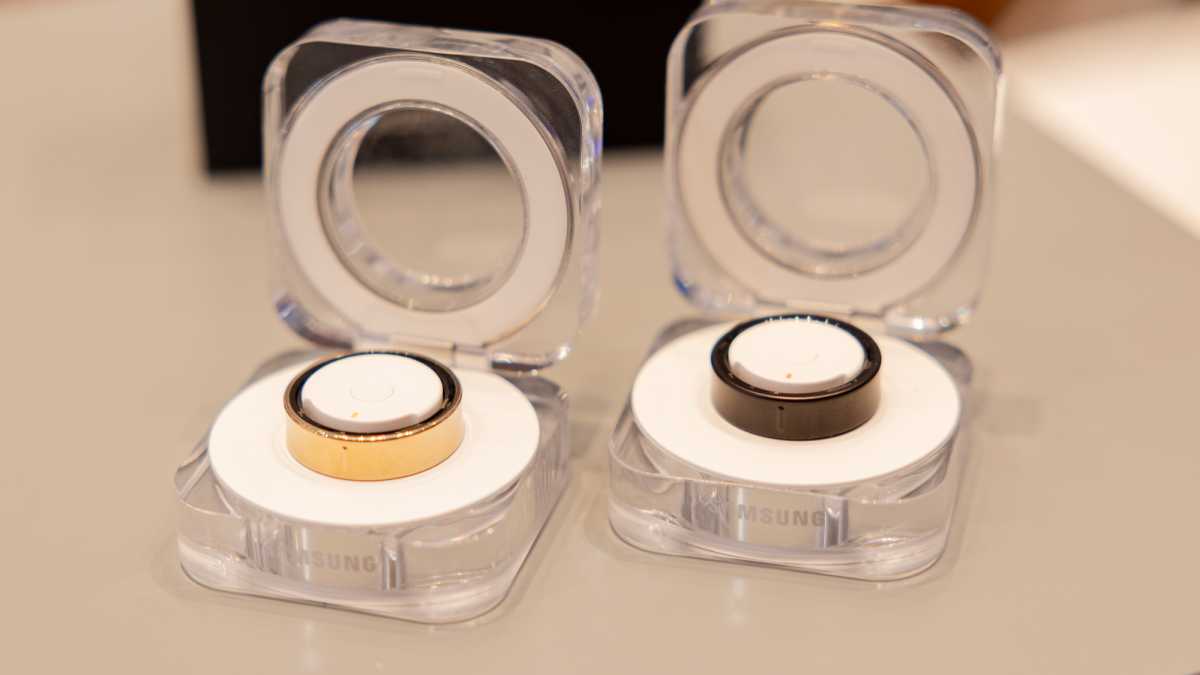Unless you’ve been living under a rock, you’ll know that Samsung just launched a raft of new devices at its big Unpacked event in Paris and one of those was its Galaxy Ring.
The firm’s first-generation smart ring is finally here after being teased in January and then again at MWC. It will take on the likes of Oura, RingConn and Circular and no doubt give the category mainstream visibility.
Tech Advisor attended a briefing a week ahead of Unpacked at Samsung’s flagship London store in King’s Cross, where we got to play with all the devices. Here’s what I learned about the Galaxy Ring.
Note that while I saw the smart ring in various sizes and colours, Samsung didn’t have any paired with a smartphone to see the software.
The charging case is genius
I hate charging devices when you get an annoying proprietary number with a USB cable that’s normally way too short to be useful.
That happens way too often for wearables, including the Oura Ring Gen 3, but Samsung has gone down a different route with a charging case.
It’s not exclusive to the Galaxy Ring as the RingConn Smart Ring has one too, but I think Samsung’s execution is better – even though the clear design has something oddly dental about it to me.
The ring sits neatly in the case and an LED ring around it shows the charging progress. Like wireless earbuds, the case has its own battery so you can top up the Galaxy Ring no matter where you are: four to six times depending on what size you have.
When the case is depleted, you can charge it back up via USB-C and it also supports wireless charging too.
Light but not luxurious
I’m somewhat torn about this as although the design of the Galaxy Ring is attractive it didn’t feel as premium as I expected it to be.
Sure, it’s great that the device is available in three colours – Titanium Silver, Titanium Black and Titanium Gold – and that it’s made from Grade 5 titanium. Samsung also says the ‘unique concave surface’ makes it scratch-resistant.

Dominik Tomaszewski / Foundry
However, in real life, there’s not a strong, tangible sense that it’s made of metal and for me, it’s down to the weight. Depending on the size you choose, the Galaxy Ring is only 2.3-3g.
On the one hand, it’s a good thing as it’s a device you’re supposed to wear 24 hours a day, but a bit more weight would make it feel more high-end and opulent. And I don’t think it would make a difference in terms of finger fatigue.
Features rivals can only dream of
When compared to rival smart rings right now, something Samsung has on its side is its ecosystem.
When you use the Galaxy Ring with other Samsung devices, you get various benefits you won’t find elsewhere.
For example, use it with a Galaxy Watch 7 and you’ll not only get more accurate tracking overall due to the software receiving two sets of data to collate, but the Galaxy Ring will last up to 30% longer as it needs to take fewer heart rate readings.
With a quoted battery life of up to seven days – the same as the rival Oura Ring Gen 3 – that’s a big difference.

Dominik Tomaszewski / Foundry
Pair it with a Samsung Galaxy smartphone and you can use pinch gestures (between your ring-wearing finger and thumb) to do things like take a photo and dismiss alarms. It also works with Find My Samsung if you lose it.
I wasn’t able to try out these features but have no reason to believe they won’t work as advertised.
Will you buy one?
The Galaxy Ring is available to pre-order now for £399/$399 and although that’s more than some rivals, there are no subscription fees.
My initial impressions are mostly positive, and the Galaxy Ring seems particularly impressive for a first-generation device. I’m expecting a review sample soon to see if it lives up to Samsung’s claims, so look out for that.
Find out how the Galaxy Ring compares to the Oura Ring Gen 3.















